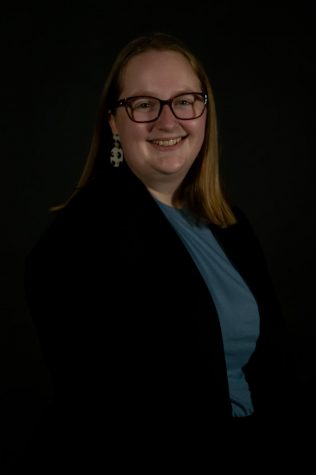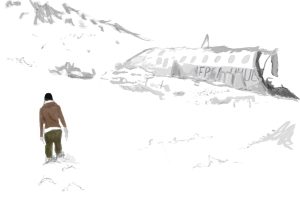Pandemic changes way of living for Winona State students

April 1, 2020
In a world consumed by the COVID-19 pandemic, people’s everyday routines, including college students’, have been thrown into flux.
Winona State University’s spring break, which was originally set for Mar. 9-13, was extended an additional two weeks until Mar. 30.
Shortly after the extension announcement, students were notified via a university email that all classes would be finished in “alternative methods”. In most cases, this means completing and submitting work through email and D2L Brightspace, which is the online hub for courses at Winona State, and partaking in pseudo face-to-face classes on Zoom, a conference call interface.
As people try to gain a sense of normalcy, college students reflect on how the coronavirus quarantines have shifted their used-to-be routines into something different.
One of the biggest parts of quarantine for students has been an extended pause from their academics.
Amanda Caudle, a vocal music education major, said her Monday, Wednesday, Friday classes kept her on campus from 9 a.m. to 3 p.m. with minimal breaks to eat.
“Now, there’s absolutely no structure to my life. I have not a single restriction on anything I do,” Caudle said.
For nursing major Megan LaVigne, she described college life before quarantine as “structured and perfect.”
But now, LaVigne has said to struggle with a home-school life balance.
LaVigne lived in the residence halls but moved out, as per Housing and Residence Life’s request to have all students in residence halls out by Mar. 31.
“It’s hard to study at home without the opportunity to go to the library. Classes are 100% different now and clinicals are online,” LaVigne said.
She also said this transition has been very stressful and that she cannot imagine doing this updated routine forever.
Beyond a shift in academics, there has also been changes to how students participate in clubs and extracurricular activities.
Her Campus members Cheyenne Halberg, Meg Chaffee and Harmony Angellar, among the 20 other girls, will have strictly online brainstorming and content editing for their on-campus blog.
Emily Buss mentioned that in her busy schedule, she looked forward to study groups and Chi Alpha; but she can no longer attend those either.
Another part of college students’ routine that has been impacted is their ability to work on or off-campus jobs.
Sophomore Asha Grebin was a Lourdes Fitness Center Assistant for the 2019-20 school year.
She worked between 10-15 hours a week as a student-help employee and managed the check-ins, check-outs and general upkeep, including sanitizing equipment and laundry of the West Campus Fitness Center.
With the spread of the virus, the campus facilities, including the Fitness Center and Lourdes Pool, were shut down for the rest of the school year, which was Grebin’s only job.
She is currently not working while quarantined at home.
Grebin expressed concerns about living and working at home during school.
“I’m okay living with my parents over the summer because I don’t have anything else to do besides work. But, putting school on top of also living at home might send my stress levels through the roof.”
Social work majors Allie Westphal and Maddi Peart carry jobs outside of campus grounds.
Westphal describes the past few weeks working at Walmart as “insane.”
“Working there is always busy but now people are going crazy and buying so many things in bulk. Our shelves are emptied as soon as we put things out,” Westphal said.
Maddi Peart was also deemed an essential employee with her group homes and Independent Living Skills (ILS) clients.
Peart works at Legacies in Winona and talked about how her employers have encouraged her to make the most of the quarantine.
“Our services are even more important now in the stressful times of coronavirus,” Peart said.
For the most part, Peart has had consistent hours but has faced changes in work protocols during that time.
“We’ve been observing the 6ft social distancing rule. We also clean more when sitting in the program space, wash our hands before and after touching things and limit the number of people in communal spaces,” Peart said.
Peart said the most rewarding part of her work experiences during this time was a large food donation to help her and other workers make lunches for themselves and clients.
People like Julia Feld, who were working and living in other states, also faced major schedule upheavals.
Feld, a Recreation, Tourism and Therapeutic Recreation (RTTR) major, held an out-of-state internship in Hawaii this semester.
During the internship, Feld worked 8 a.m. to 3 p.m. and was given the rest of her time to study and explore.
Because COVID-19 brought Feld home earlier than anticipated, she described the experience as being “thrown out of her loop”.
Feld described the biggest shift to be “going back to Minnesota weather after spending two months in Hawaii and not getting to see friends immediately after returning.”
While many students have said they enjoyed a reprieve from school, they looked forward to a return to academic routine in the form of online class on Mar. 30.
Emily Buss mentioned the biggest change she anticipated was adopting a “go-at-your-own-pace” mentality.
Other people shared Buss’s sentiments about this change in habits and reflected on how long it might be until students reach a “new normal.”
“I have asthma, so even when they give the all clear that infections are dying down… will I actually be safe anymore?” LaVigne said.
Other students gave estimates of when they thought this virus would slow down with most saying 1-2 months, when the fall 2020 school year begins and the most common answer: “hopefully very soon”.
While nobody knows how COVID-19 will end, Harmony Angellar summarized her experience in this ever-changing time.
“For the first week of quarantine, all I did was not care. However, at this point I am very eager to get back to a normal routine,” Angellar said. “I’ve definitely learned to appreciate the structure in the schedule I once had, and I’m not going to take any opportunities to get outside, spend time with friends or even going to work, for granted anymore.”
The opinions expressed in this paper are not necessarily those of Winona State University, the Minnesota State Colleges and University system, or the Winona State University student body.


































